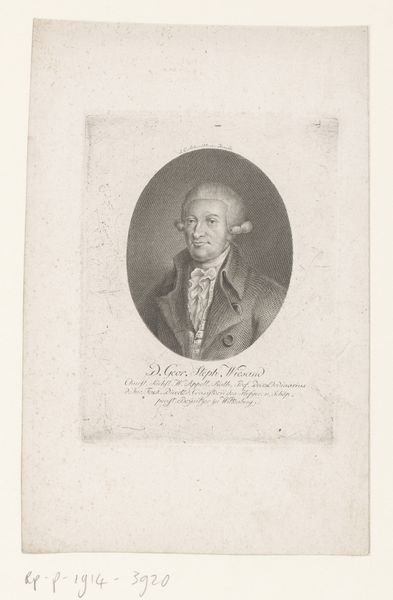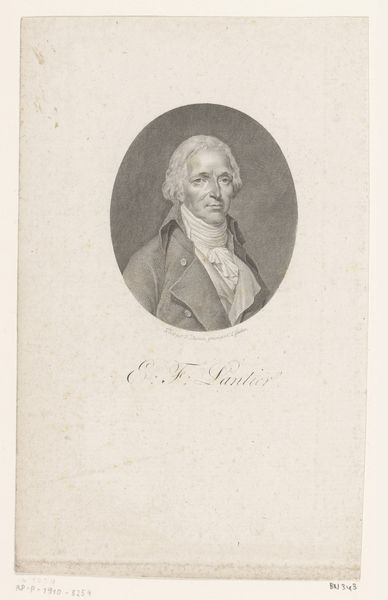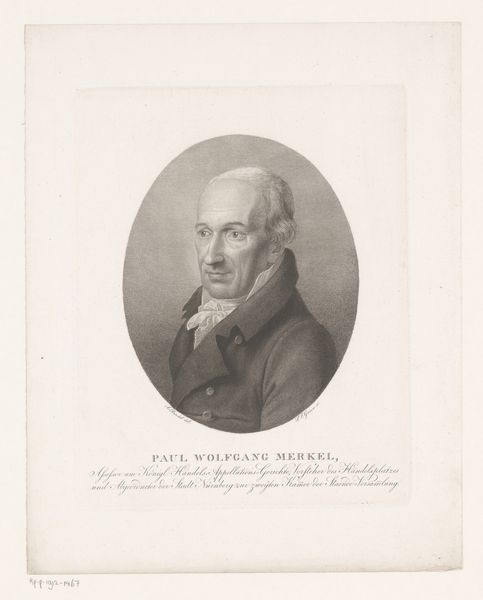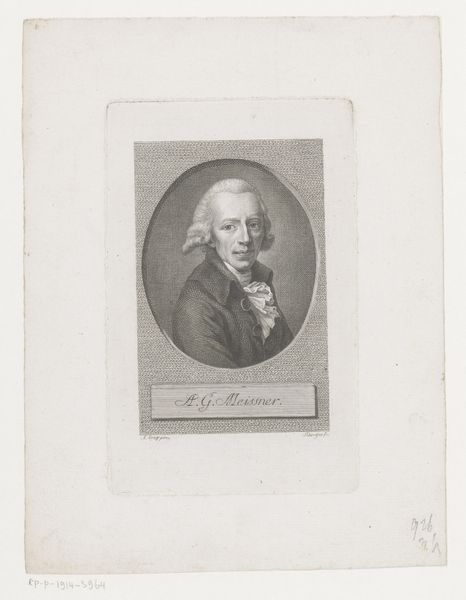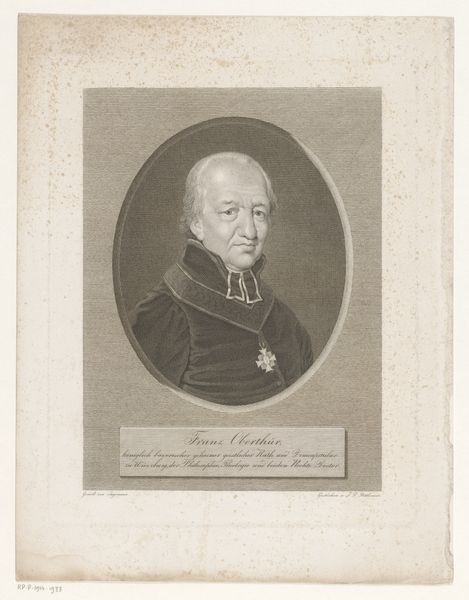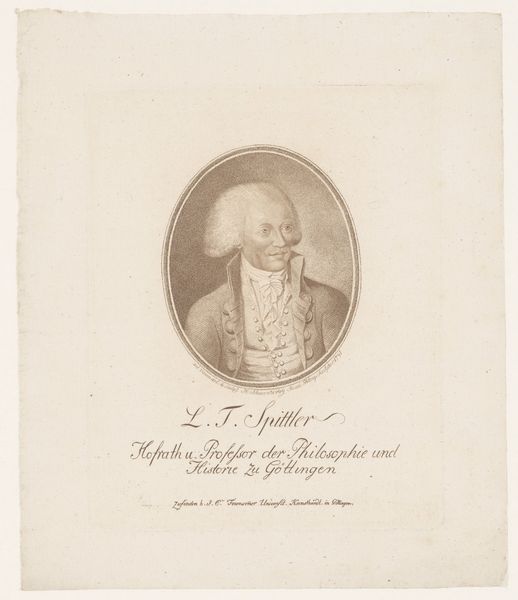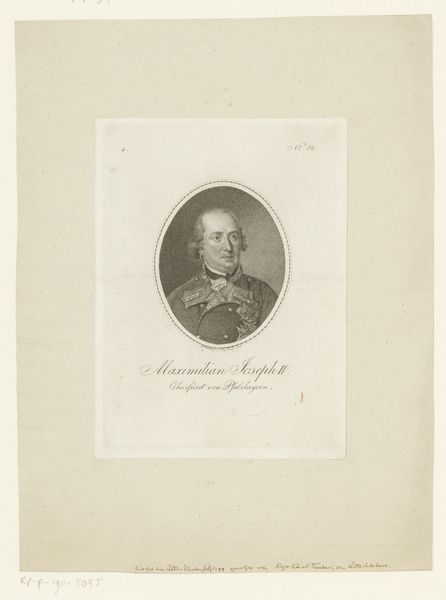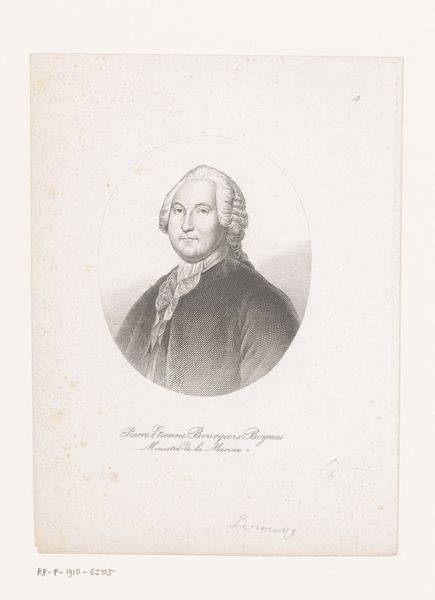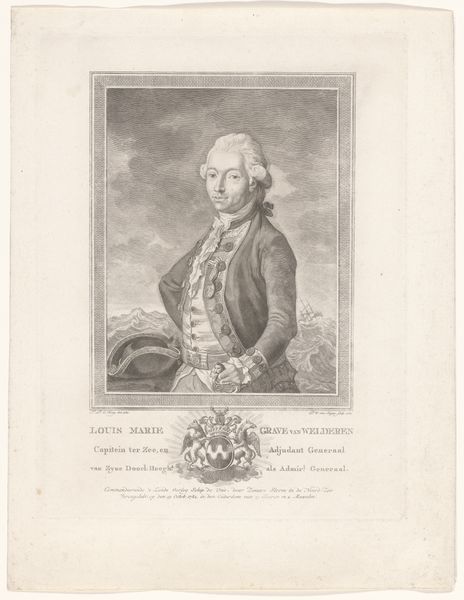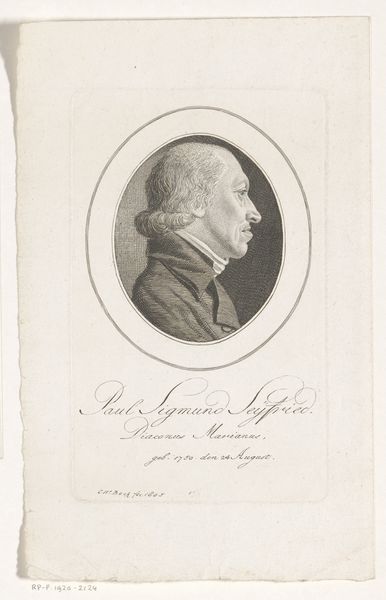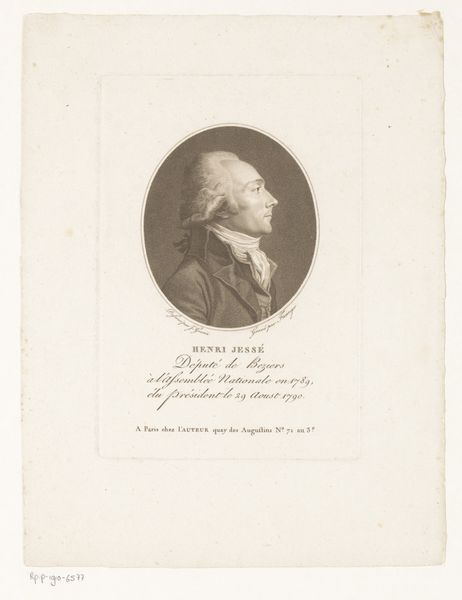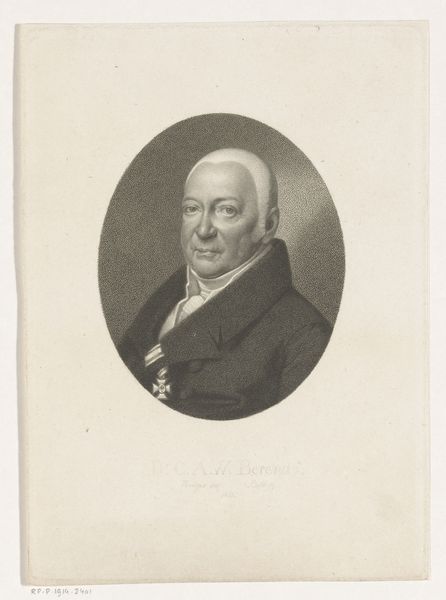
drawing, paper, engraving
#
portrait
#
drawing
#
neoclacissism
#
old engraving style
#
paper
#
engraving
#
monochrome
Dimensions: height 153 mm, width 96 mm
Copyright: Rijks Museum: Open Domain
Johann Daniel Laurenz the Younger made this portrait of Gerhard Anton von Halem with etching around 1818. Note how the sitter, a high-ranking official in Oldenburg, is depicted within an oval frame, a visual convention that consciously echoes ancient Roman portraiture. This is no accident, since the educated elites of early 19th-century Germany often saw themselves as heirs to the Roman Republic. By visually linking von Halem to Roman republicanism, the artist implicitly associates the sitter with civic virtue and public service. The portrait style suggests the sitter is a man of reason and learning. Looking at this etching, it's important to remember that portraits like this one helped to define social status, projecting power and authority in a society undergoing rapid change. As historians, we need to examine archives and libraries to uncover the networks of patronage and power that shaped the production and reception of such images. By doing so, we can gain a deeper understanding of art's role in shaping the social and political landscape of its time.
Comments
No comments
Be the first to comment and join the conversation on the ultimate creative platform.
